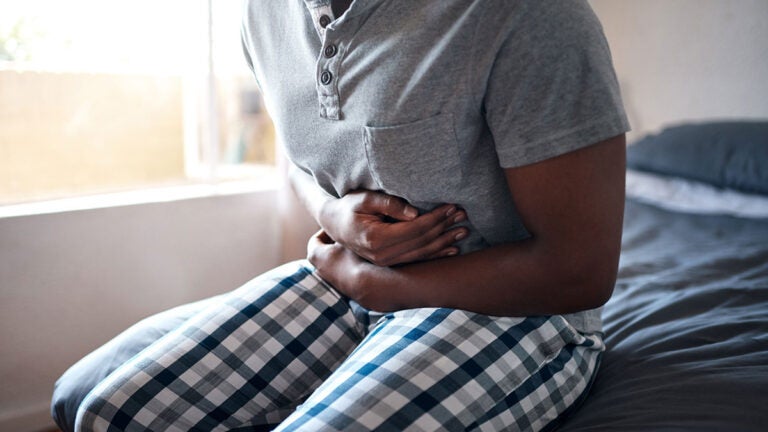
USC Dornsife scientists find the likely order of COVID-19 symptoms
Researchers at the USC Dornsife College of Letters, Arts and Sciences have found the likely order in which COVID-19 symptoms first appear: fever, then cough and muscle pain, followed by nausea, and/or vomiting, and diarrhea.
Knowing the order of COVID-19’s symptoms may help patients seek care promptly or decide sooner than later to self-isolate. The information also may help doctors rule out other illnesses, plan how to treat patients and perhaps intervene earlier in the disease.
The study, which appears today in the journal Frontiers in Public Health, was led by doctoral candidate Joseph Larsen and scientists Peter Kuhn and James Hicks.
Kuhn is Dean’s Professor of Biological Sciences and professor of biological sciences, medicine, biomedical engineering, aerospace and mechanical engineering and urology, and Hicks is professor (research) of biological sciences. Both are based in the USC Michelson Center for Convergent Bioscience.
“This order is especially important to know when we have overlapping cycles of illnesses like the flu that coincide with infections of COVID-19,” said Kuhn. “Doctors can determine what steps to take to care for the patient, and they may prevent the patient’s condition from worsening.”
“Given that there are now better approaches to treatments for COVID-19, identifying patients earlier could reduce hospitalization time,” said Larsen.
Fever and cough are frequently associated with a variety of respiratory illnesses, including influenza, Middle East Respiratory Syndrome (MERS) and Severe Acute Respiratory Syndrome (SARS). But the timing and symptoms in the upper and lower gastrointestinal tract set COVID-19 apart.
“The upper GI tract (i.e., nausea/vomiting) seems to be affected before the lower GI tract (i.e., diarrhea) in COVID-19, which is the opposite from MERS and SARS,” the scientists wrote.
See USC News for more on the story >>
About the study
In addition to Larsen, Kuhn and Hicks, other study co-authors were Margaret R. Martin of Nexus Development PA LLC and John D. Martin at NanoCarrier Co., Ltd., in Chiba, Japan.
Funding for the study came from the National Cancer Institute (Award Number U54CA143906 and P30CA014089) and the Carol Vassiliadis fellowship. Larsen also had support from the USC Dornsife College and the Schlegel Family Endowment Fellowship.
About the USC Michelson Center for Convergent Bioscience
The Michelson Center brings together a diverse network of scientists and engineers from USC Dornsife, USC Viterbi School of Engineering and Keck School of Medicine of USC to solve some of the greatest intractable problems of the 21st century — from cancer, to neurological disease, to cardiovascular disease.